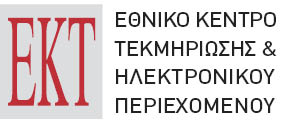Η παρούσα εργασία επιχειρεί τη μελέτη και την έκδοση του Ανθολογίου του Νίκωνα, μια ιεροκοσμική συλλογή παραδιδόμενη αποκλειστικά από τον κώδικα Princeton MS 180 (University Library), ο οποίος χρονολογείται στα τέλη του 13ου αιώνα. Το ανθολόγιο, το οποίο συλλέγει 786 σύντομα αποσπάσματα θύραθεν και θρησκευτικών συγγραφέων, εντάσσεται στην παραγωγή ιεροκοσμικών συλλογών και παρουσιάζει ειδικό ενδιαφέρον για την αλφαβητική δομή της καθώς και για τα περιεχόμενά της. Πάνω από εκατό αποσπάσματά του είναι αταύτιστα. Η διατριβή διαρθρώνεται σε τέσσερα μέρη. Tο πρώτο, τα προλεγόμενα, διαιρείται σε πέντε κεφάλαια. Στο πρώτο από αυτά παρουσιάζονται εν συντομία τα ιεροκοσμικά ανθολόγια, με αναφορές στην πιο πρόσφατη και συνάμα πλούσια βιβλιογραφία. Ακολουθεί ένα κεφάλαιο αφιερωμένο στην προσπάθεια ανίχνευσης της προσωπικότητας του Νίκωνα καθώς και στη λεπτομερή περιγραφή της φύσης, της δομής, των περιεχομένων του ανθολογίου και των σχέσεών του με τις άλλες συλλογές. Στο τρίτο κεφάλαιο παρουσιάζονται αναλυτικότερα οι κύριες συλλογές που έχουν στενότερη σχέση με εκείνη του Νίκωνα. Στο τέταρτο κεφάλαιο προσφέρονται κάποιες πληροφορίες για το χειρόγραφο και περιγράφονται οι ιδιαιτερότητες που αφορούν τη ορθογραφία και στίξη του. Στο πέμπτο κεφάλαιο εκτίθενται οι αρχές που ακολουθούνται στην παρούσα έκδοση. Στο δεύτερο μέρος περιλαμβάνεται η έκδοση του κειμένου με τα υπομνήματα (κριτικών, παραλλήλων και πηγών). Το τρίτο μέρος αποτελείται από τον πίνακα στον οποίο φαίνονται οι σχέσεις μεταξύ των έως τώρα εκδεδομένων ιεροκοσμικών συλλογών και τα αποσπάσματα τα οποία το ανθολόγιο του Νίκωνα μοιράζεται με αυτές τις τελευταίες. Η εργασία ολοκληρώνεται με μερικές φωτογραφίες του χειρογράφου.Το τέταρτο μέρος της εργασίας αποτελείται από τα ευρετήρια (αρχών, παραθεμάτων και ονομάτων).
The present dissertation sets out to study and publish the Anthology of Nikon, a sacro-profane collection preserved exclusively in the codex 180 Princeton University Library, which dates to the late 13th century. The collection, which includes 786 short quotations from profane and religious authors, belongs to the popular production of sacro-profane florilegia in Byzantium and is of special interest for its alphabetical structure as well as for its contents. Over a hundred of its passages are unidentified. The thesis is structured into four parts. The first part, the prolegomena, which is divided into four chapters, first provides a brief presentation of sacro-profane anthologies with references to the most recent and rich bibliography, as well as a more detailed discussion of the main collections that are most closely related to that of Nikon. Its second chapter is devoted to tracing the personality of Nikon, along with a detailed description of the nature, structure, contents of the anthology and its relation to the other collections. The third chapter offers some information about the manuscript and describes the peculiarities of its script and punctuation. The fourth chapter enumerates the editorial principles followed by this edition. The second part offers the edition of the text with notes (critical apparatus, parallels and sources). The third part includes the indexes (of authorities, passages and names). The thrid part provides the table with the relationships between the so far published sacro-profane collections that include excerpts shared by the Nikon anthology, in addition to selected photographs of the manuscript. Lastly, the third part includes the indexes (of authorities, passages and names).
Die vorliegende Arbeit unternimmt die Edition und Untersuchung des Florilegiums des Nikon, einer sakro-profanen Textsammlung (oder Textzusammenstellung), die ausschließlich in der Handschrift 180 der Princetoner Universitätsbibliothek aus dem 13. Jahrhundert überliefert ist.
Die Textsammlung besteht insgesamt aus 786 Zitaten profaner wie christlich-religiöser Autoren, die jedoch in mehr als 100 Fällen nicht mehr identifiziert werden können. Sie ist sowohl inhaltlich als auch formell von großem Interesse für die Erforschung der Textgattung. Die vorliegende Arbeit gliedert sich in vier Teile.
Der erste Teil ist wiederum in vier Kapitel unterteilt, deren erstes sich der Textgattung der sakro-profanen Florilegien mit Bezug auf die umfangreiche jüngere Sekundärliteratur widmet und dem Text des Nikon eng verwandte Beispiele im Detail bespricht. Das zweite Kapitel behandelt zunächst den Autor, Nikon, als historische Person und widmet sich dann einer detaillierten Beschreibung der Art, Struktur und des Inhalts seines Werkes. Dabei wird auch die Beziehung zu anderen Textsammlungen beleuchtet. Das dritte Kapitel behandelt formelle Merkmale der Handschrift, insbesondere die Schriftform und Interpunktion. Im vierten Kapitel werden die Prinzipien der folgenden Edition dargelegt.
Der zweite Teil der Arbeit besteht schließlich aus der Edition mit ihren drei Apparaten zu Quellen, Parallelen und Kritik.
Der dritte und vierte Teil umfasst die Tafeln mit einem Schaubild zu den Beziehungen zwischen dem Florilegium Nikons und anderen Textsammlungen, einigen Abbildungen der Handschrift, sowie die Indices.
 National Documentation Centre (EKT)
National Documentation Centre (EKT)



